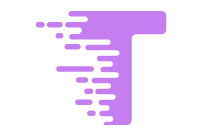Mastering IoT Remote Device Management: A Tutorial
The Internet of Things (IoT) has revolutionized how individuals and businesses interact with technology. From smart home devices like thermostats and security cameras to large-scale industrial equipment, IoT has introduced a level of connectivity and automation we could have only dreamed of a few decades ago. But with this interconnected world comes the need for robust and efficient remote device management. After all, maintaining and controlling a dispersed network of IoT devices can be an overwhelming challenge.
This tutorial will guide you through the essential steps to mastering IoT remote device management. Whether you’re managing a fleet of smart devices for your home or overseeing hundreds of endpoints in an industrial environment, the insights in this post will help you do it effectively and securely.
What is IoT Remote Device Management?
IoT remote device management refers to the process of monitoring, maintaining, updating, and securing IoT devices from a centralized platform or network. This process is crucial for ensuring that all devices function optimally and securely throughout their lifecycle. Remote device management helps organizations:
- Gain Visibility: Understand the status of each device within their network.
- Simplify Maintenance: Deploy updates, patches, and fixes without needing physical access.
- Enhance Security: Address vulnerabilities and monitor for anomalies in real time.
- Streamline Scalability: Manage increasing numbers of devices efficiently.
From device onboarding to decommissioning, remote management ensures that the overall IoT ecosystem stays reliable and secure.
Why is IoT Remote Device Management Important?
The benefits of IoT remote device management extend far beyond convenience. Here’s why it is essential:
- Scalability
With the continuous growth of IoT devices, manual management isn’t feasible. A remote management system ensures scalability by supporting hundreds, if not thousands, of connected devices efficiently.
- Operational Efficiency
Remote management cuts costs and saves time by allowing software updates and issue resolutions remotely, reducing the need for in-person maintenance visits.
- Enhanced Security
Security threats, such as unauthorized access or data breaches, can compromise IoT systems. Remote device management tools help detect and mitigate these risks by deploying patches and monitoring for suspicious activities.
- Improved User Experience
Whether it’s reduced downtime or faster feature rollouts, remote management enhances the overall end-user experience.
- Compliance and Reporting
Adhering to industry regulations is easier with remote management. Many systems offer auditing features that ensure all compliance requirements are met.
Now that you know what IoT remote device management entails and why it’s crucial, let’s walk through a step-by-step approach to mastering it.
Step 1: Setting Up an IoT Management Platform

Choose the Right Remote Management Solution
The first and perhaps most important step is selecting an IoT management platform that suits your needs. Some popular platforms include AWS IoT Core, Google Cloud IoT, and Azure IoT Hub. Consider these factors when making your choice:
- Compatibility with your devices
- Security features (e.g., end-to-end encryption)
- Scalability for your growing device fleet
- Analytics and reporting capabilities
- Ease of use for your team
Device Onboarding and Registration
Once you have a platform in place, start by onboarding your devices. This involves registering each IoT device on the platform so that it can communicate with your network. Make sure you:
- Assign unique identifiers to each device.
- Confirm successful integration and connectivity.
Configure IoT Gateways
IoT gateways act as intermediaries between devices and the cloud. They enhance performance, reduce latency, and provide an added layer of security. Configuring your gateway properly will optimize data flow across the network.
Step 2: Monitoring and Diagnostics
Real-Time Monitoring
Effective IoT management requires continuous monitoring to ensure devices are functioning correctly. Use your platform’s dashboard to track crucial metrics such as uptime, battery health, and connectivity status.
Pro Tip: Set up alerts for anomalies, such as drastic changes in battery life or temperature, to address potential issues proactively.
Diagnostic Tool Integration
Integrate diagnostic tools that allow you to troubleshoot devices remotely. These tools enable IT teams to identify the root cause of issues without physical intervention.
Step 3: Updating and Maintaining Devices
Automated Software Updates
Keeping your IoT devices updated is non-negotiable when it comes to performance and security. Automated updates allow you to push patches and new features to multiple devices simultaneously. Best practices include:
- Scheduling updates during non-peak hours to minimize disruptions.
- Testing updates on a subset of devices before deploying them network-wide.
Regular Maintenance Checks
Even with automated updates, routine maintenance checks are essential. These checks help you ensure that devices are performing optimally and detect potential risks.
Step 4: Enhancing IoT Security
Encryption and Authentication
IoT devices are particularly vulnerable to cyberattacks. Secure your devices and data with strong encryption protocols and multi-factor authentication. Always disable default passwords on IoT devices.
Firmware Security
Ensure that all firmware is up-to-date and includes the latest security protections. Enable over-the-air (OTA) firmware updates so you can deliver patches quickly as vulnerabilities arise.
Network Segmentation
Segment your IoT network from your primary business or home network. This minimizes the risk of cross-network attacks.
Step 5: Leveraging Analytics for Insights

Data Collection
IoT devices generate massive amounts of data, but raw data is only useful when processed effectively. Your management platform should allow for seamless data collection and storage, ensuring information is readily accessible when needed.
Analyzing Device Performance
Use analytics capabilities to track device performance trends. For example:
- Are specific devices exhibiting a shorter-than-expected lifespan?
- Do certain environmental factors appear to impact device performance?
User Behavior Insights
For businesses, analytics isn’t just about device health—it can also help you understand how end-users interact with your devices. This kind of insight can drive product improvements and user satisfaction.
Step 6: Scaling Your IoT Ecosystem
Plan Ahead
Scaling doesn’t just mean adding more devices. It involves ensuring your network infrastructure can handle higher volumes of data and connections.
- Use load-balancing techniques.
- Optimize device communication to avoid bottlenecks.
Cloud Integration
Cloud solutions are powerful allies when scaling your IoT fleet. Platforms like AWS and Google Cloud allow you to manage vast numbers of devices without compromising speed or efficiency.
Take Control of Your IoT Ecosystem
Effectively managing IoT devices can seem daunting, but the right approach and tools make it manageable—and even enjoyable. From setup and security to scaling and analytics, mastering IoT remote device management will transform how you monitor and control your connected ecosystem.
Whether you’re running a smart home or an enterprise-level IoT network, applying these principles will help you make the most of your investment. Start by exploring the leading IoT management platforms and digital tools that align with your goals, and step into the future of IoT with confidence.
Conclusion
Mastering IoT remote device management is key to unlocking the full potential of your connected ecosystem. By following best practices in security, scalability, and analytics, you can ensure your IoT devices operate efficiently and reliably. The right tools and platforms serve as enablers, allowing you to maintain control, optimize performance, and achieve your desired outcomes. Begin your IoT management journey today and harness the power of connectivity to drive innovation and success.
FAQs About IoT Remote Device Management
1. What is the best IoT management platform?
The best IoT management platform is AWS IoT Core.
2. Can I manage IoT devices without a central platform?
Yes, you can manage IoT devices without a central platform. Many IoT devices can be controlled and monitored directly through their own mobile apps or web interfaces.
3. How can I ensure my IoT devices are secure?
Use strong and unique passwords, enable two-factor authentication, keep firmware up-to-date, disable unnecessary features, and restrict network access.
4. How does remote IoT device management save costs?
Remote IoT device management can save costs by reducing on-site technician visits, minimizing device downtime, and enabling proactive maintenance.
5. Are IoT management platforms suitable for small businesses?
Yes, IoT management platforms can be suitable for small businesses. They can provide cost-effective solutions for remote monitoring, automation, and data analysis.

